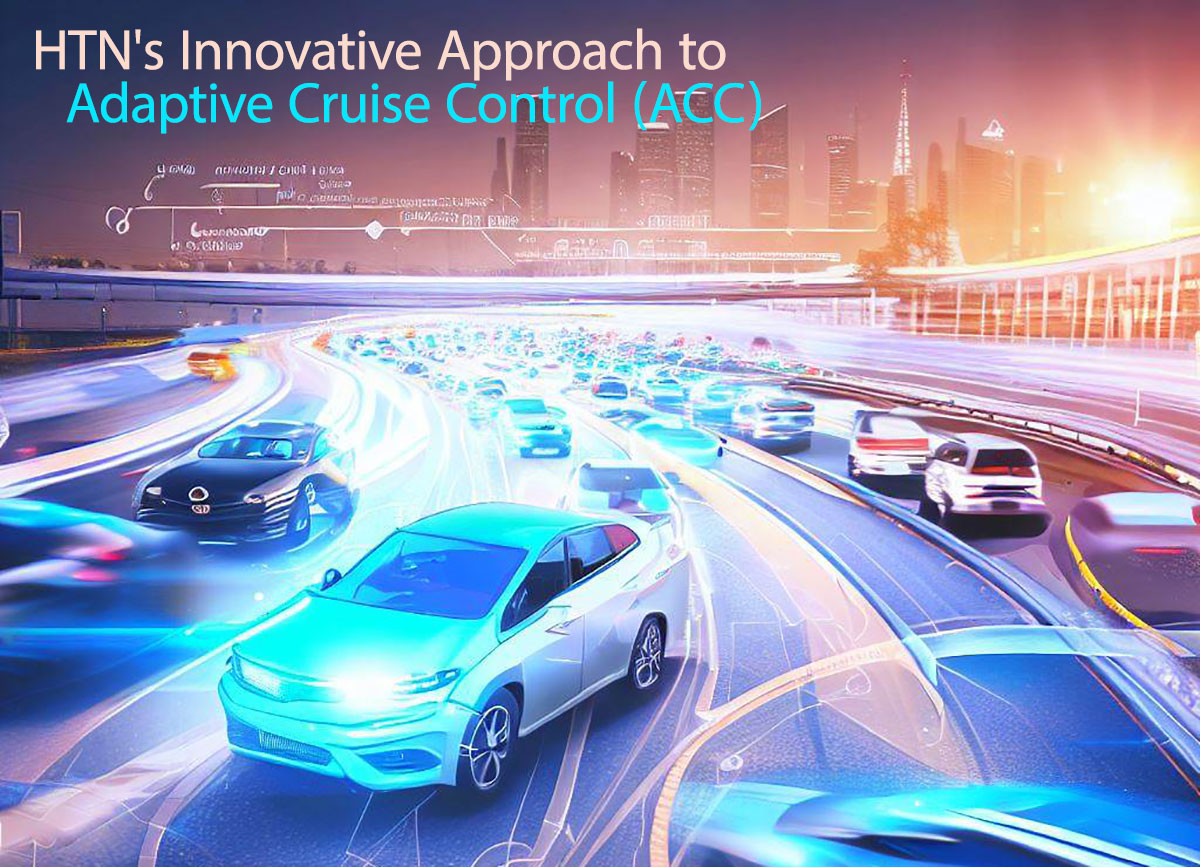Revolutionizing Traffic Flow: HTN’s Innovative Approach to Adaptive Cruise Control Systems
In the rapidly evolving field of Intelligent Transportation Systems (ITS), HTN stands at the forefront of innovation. As the industry focuses on developing technologies for autonomous driving, HTN recognizes the significance of addressing traffic flow scenarios alongside driver safety. In this article, we delve into HTN’s groundbreaking advancements in traffic flow management, particularly through the implementation of an Adaptive Cruise Control (ADA) system and platoon-based traffic configurations. Our cutting-edge technologies and ongoing research aim to revolutionize traffic flow dynamics and enhance the overall driving experience.
The Importance of Traffic Flow Considerations
While ensuring driver safety remains a top priority for technology developers, HTN firmly believes that traffic flow considerations are equally crucial. As the world moves towards mass mobility and increased interconnectivity, traditional traffic patterns and practices must be reimagined. To meet future demands, traffic flow velocity needs to be enhanced, and intervehicle spacing must be reduced. However, HTN’s extensive traffic analysis has revealed that even technology-managed traffic flow conditions can be susceptible to slow-moving traffic jams, similar to those experienced in human driver-controlled traffic.
HTN’s Integral Diagram of Traffic Flow Dynamics
To address these challenges, HTN has developed an integral Diagram of Traffic Flow Dynamics, which serves as a comprehensive framework encompassing a wide range of traffic flow scenarios. This diagram not only includes human driver-controlled traffic flow but also provides insights into technology-based traffic flow opportunities and the transition between the two. It serves as a valuable design tool for traffic management systems, enabling the development of innovative solutions to mitigate traffic congestion and improve overall traffic efficiency.
Simulation and Visualization Model
Building upon the foundation of the integral diagram, HTN has developed a state-of-the-art simulation and visualization model under a National Science Foundation (NSF)-funded program. This model enables us to assess the performance of various traffic flow design options and refine them iteratively. By simulating real-world traffic scenarios and incorporating data from different road conditions, the model allows us to optimize traffic flow management strategies effectively. It serves as a virtual commissioning platform, providing valuable insights into the practical implementation of our traffic management technologies.
Preventing Traffic Jams with HTN’s Innovative Solutions
HTN’s commitment to preventing traffic jams is at the core of our technological advancements. By leveraging the functionalities outlined in the integral diagram, we have developed novel traffic management technologies that mitigate congestion and enhance traffic flow efficiency. Our ongoing efforts focus on creating an electronic model capable of testing and refining traffic flow design options in a virtual environment. This virtual commissioning platform allows us to assess the performance and effectiveness of different traffic management strategies, ensuring optimal results when implemented in the real world.
Addressing Platoon-Based Traffic Scenarios
As technology-based traffic flow scenarios consider shorter intervehicle spacings and higher velocities, the concept of platoon-based traffic configurations becomes paramount. HTN recognizes the potential of platooning to enhance traffic flow efficiency and reduce congestion. Our technology and related patent applications specifically address platoon-based traffic scenarios, providing comprehensive guidance for their design and safe operation. It is essential to note that the risk of traffic jam formation does not diminish with technology-based traffic management systems; in fact, it can increase. Therefore, HTN’s traffic management technology is explicitly designed to effectively prevent the formation of traffic jams, ensuring a seamless driving experience for all road users.
Conclusion
HTN’s commitment to innovation in the field of Intelligent Transportation Systems is revolutionizing traffic flow dynamics. Through our comprehensive understanding of traffic flow considerations and the development of cutting-edge technologies, including Adaptive Cruise Control Systems and platoon-based traffic configurations, we aim to enhance traffic efficiency and mitigate congestion. Our integral Diagram of Traffic Flow Dynamics, coupled with our simulation and visualization model, empowers us to design and refine traffic management strategies effectively. As we continue to advance our research and development efforts, HTN remains dedicated to creating a safer and more efficient future for transportation.
Discover HTN’s revolutionary approach to traffic flow management using adaptive cruise control systems and innovative technologies. Learn how they are tackling traffic congestion, enhancing safety, and optimizing travel times for a future of autonomous driving.



